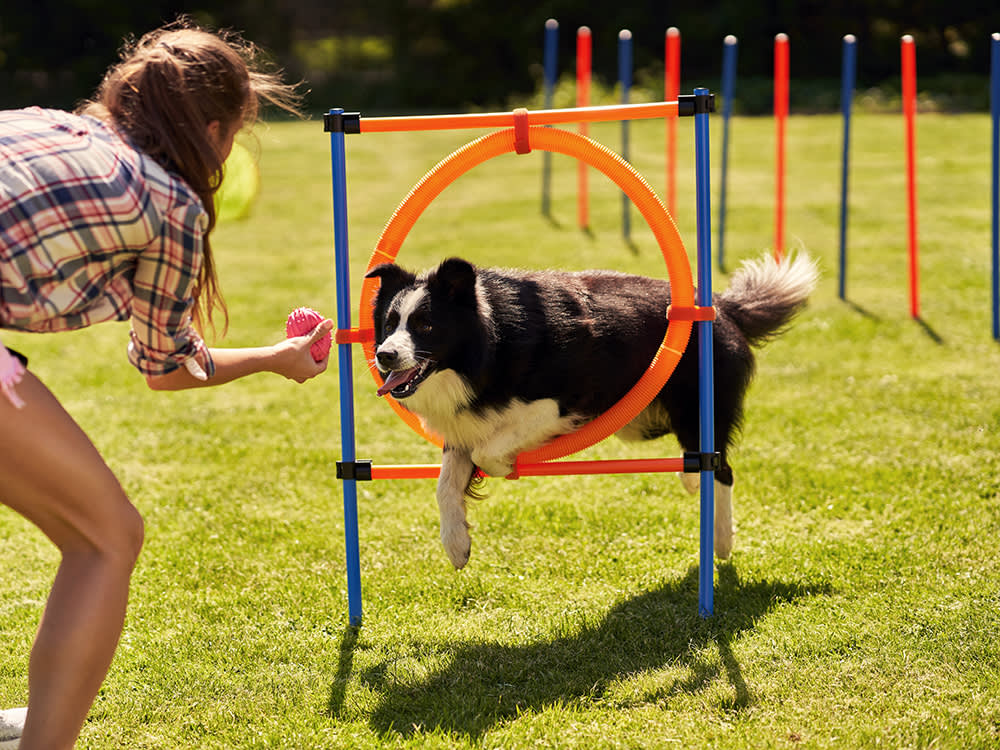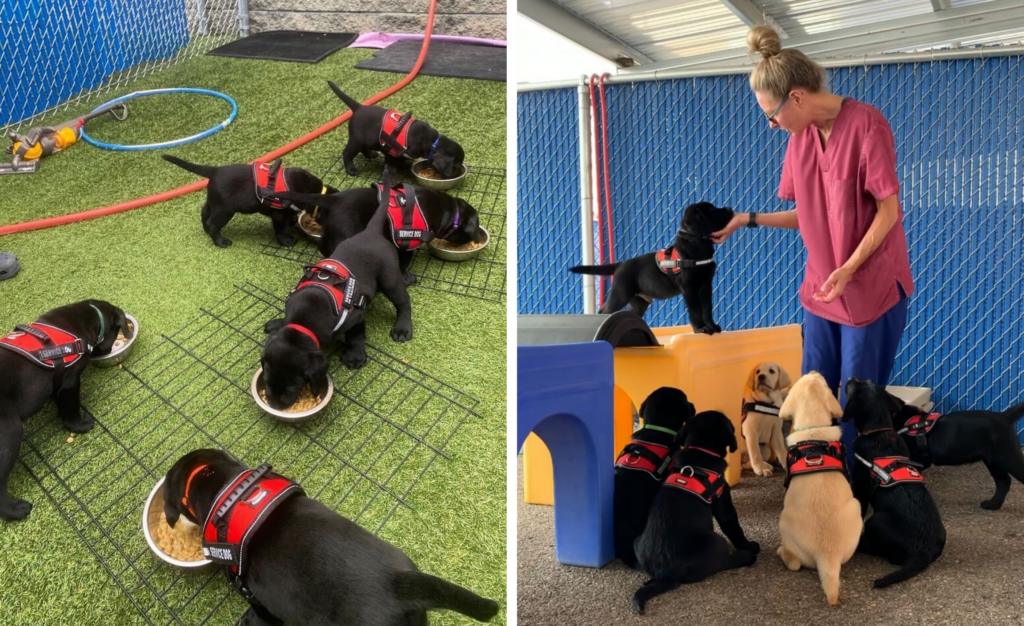Dog Training Techniques to Help Manage Aggressive Behavior in Dogs
Dog Training Techniques to Help Manage Aggressive Behavior in Dogs
Blog Article
Newbie's Overview to Successful Canine Training at Home
Efficiently training a canine at home calls for a nuanced understanding of canine actions and effective communication strategies. Developing clear training objectives, utilizing top notch benefits, and maintaining uniformity across household participants are essential components. Integrating training into everyday routines can improve both engagement and retention.
Comprehending Dog Behavior
Comprehending pet dog habits is necessary for efficient training and promoting a harmonious relationship between humans and their canine friends. Pet dogs interact mainly through body language, vocalizations, and face expressions, making it essential for owners to translate these signals properly. Recognizing habits such as tail wagging, roaring, or cowering can give understandings right into a pet's emotional state and objectives.

Typical behavioral issues, such as aggressiveness, stress and anxiety, or too much barking, frequently come from misunderstandings or unmet demands. Observing and dealing with these problems promptly can protect against acceleration and make certain a positive training experience. By promoting a deep understanding of pet dog habits, proprietors can tailor their training approaches to fit their canine friends, inevitably resulting in a well-behaved and happy pet.
Important Educating Devices
A fully equipped training area can significantly enhance the effectiveness of canine training in the house. Essential training devices make certain that both the dog and the fitness instructor can participate in productive sessions that promote understanding and bonding.

Purchasing a strong chain and a comfortable, well-fitting collar or harness is essential for safety and control. These devices assist establish limits and make sure the pet dog continues to be secure throughout training. In addition, an assigned training area, devoid of disturbances, aids concentration for both the fitness instructor and the dog.
Educating help such as training pads, cones, or agility devices can additionally boost the experience by presenting range and challenges. Lastly, having a note pad or digital application for tracking progression can be invaluable, allowing you to keep in mind successes and areas for enhancement. Making use of these essential tools will certainly produce a positive training atmosphere and lay the structure for reliable understanding.
Developing a Training Routine
Developing a regular training regimen is essential for effective pet training in the house. A well-structured routine not just assists in reinforcing wanted habits but additionally supplies your pet with a complacency and predictability. To develop an efficient training regular, begin by determining specific training objectives, such as standard commands, leash strolling, or house-breaking.
Pick a designated time daily for training sessions, preferably when your canine is alert and responsive. Sessions ought to be brief, roughly 5 to 15 mins, to keep focus and prevent tiredness. Consistency in timing and environment will enhance your pet dog's learning experience.
Incorporate training into daily tasks to enhance abilities. As an example, technique commands during walks or nourishment, which integrates discovering into all-natural regimens. Additionally, remain versatile and change the routine as needed, suiting your pet dog's energy levels and state of mind.
Positive Reinforcement Techniques
Favorable support strategies are basic to reliable canine training, promoting desired habits with rewards instead of penalty. This technique uses positive stimulations, such as treats, appreciation, or play, to motivate dogs to duplicate specific activities. The foundation of this technique is timing; rewards need to be given promptly following the wanted habits to create a clear association.
When applying favorable reinforcement, it is vital to choose rewards that are motivating for your pet dog. High-value treats, such as little items of hen or cheese, can be especially effective throughout training sessions. Additionally, varying the benefits can maintain your pet's rate of interest and excitement.
Begin with straightforward commands, like "sit" or "remain," and gradually development to much more intricate tasks. Consistency is vital; make sure that all family participants make use of the same commands and reward systems to prevent complication.
In addition, it is important to remain individual and avoid irritation. Dogs, like humans, discover at their very own pace. By promoting an encouraging training atmosphere via favorable support, you can boost your pet's learning experience while enhancing the bond in between you and your furry friend, preparing for successful training results.
Usual Training Difficulties
While training a pet dog at home can be a satisfying experience, it commonly comes with a set of common difficulties that can test both patience and uniformity. One prevalent concern is distraction. Pets might end up being easily averted by sounds, activities, or perhaps scents in their atmosphere, making it difficult to keep their focus throughout training sessions.
One more difficulty is disparity in commands and reinforcement. click for more info It can prevent and puzzle the dog progression if household participants utilize various cues or rewards. Developing a unified strategy is crucial for efficient interaction.
In addition, pet dogs can experience irritation or stress and anxiety, particularly if they do not understand what is anticipated of them. This can bring about unfavorable actions, such as chewing or barking.
Ultimately, the timing of reinforcement is important (Dog training). Delayed benefits can decrease the effectiveness of positive reinforcement, as dogs may fail to link the actions with the incentive
Conquering these obstacles calls for dedication, clear interaction, and an organized training strategy. Identifying and dealing with these usual challenges will lead the means for a more effective and delightful training experience in the house.
Conclusion
In final thought, successful pet training at home demands a detailed understanding Learn More Here of canine behavior and reliable communication approaches. By developing clear training objectives and utilizing high-grade deals with along with positive reinforcement, the training process comes to be much more gratifying for both the pet dog and the trainer. Consistency, flexibility, and patience are essential components that help with discovering. Inevitably, incorporating training into day-to-day regimens enhances the bond between pet dog and proprietor, making the experience both delightful and efficient.
Developing a constant training routine is necessary for efficient pet dog training at home.Positive support methods are fundamental to reliable pet dog training, promoting wanted habits via benefits instead than punishment (Dog training). By cultivating a helpful training atmosphere with favorable support, you can boost your dog's learning experience while reinforcing the bond in between you and your hairy friend, laying the foundation for effective training results
In conclusion, successful canine training at home demands an extensive understanding of canine behavior read the full info here and efficient interaction approaches. By developing clear training goals and utilizing high-grade treats alongside positive reinforcement, the training procedure ends up being extra fulfilling for both the canine and the trainer.
Report this page